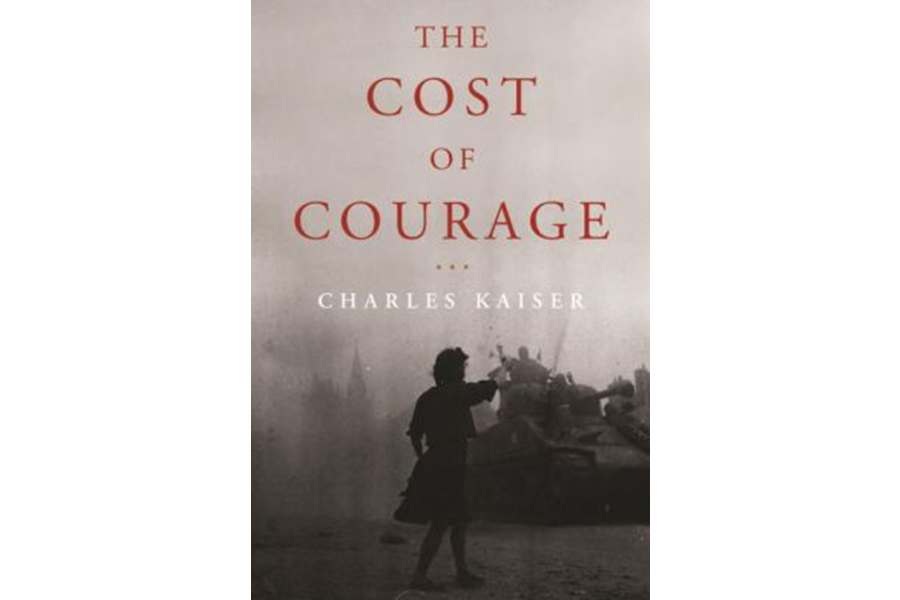'The Cost of Courage' profiles a heroic family of French Resistance fighters
Loading...
In the summer of 1940, a German soldier stationed in occupied Paris told a young French woman that her city seemed sad. Her reply was a perfect blend of wit and reproach: “You should have been here before you got here.”
The Nazi invasion of France had begun in May of 1940, and after only six weeks of fighting 90,000 French soldiers were killed. By the end of June, flags bearing swastikas fluttered in the Parisian breezes. The city had good reason to be sad.
Charles Kaiser records this exchange in his moving new book on the French Resistance during World War II, The Cost of Courage. His story recounts the efforts of multiple members of a single Paris family to sabotage the Nazi occupation and hasten an Allied victory. His heroes are a trio of siblings from the Boulloches family, the sisters Jacqueline and Christiane and their brother André, but dozens of other family and friends eventually became entangled in the clandestine and dangerous work the siblings undertook. By the end of the war, half of the members of the immediate Boulloches family were dead.
Kaiser’s uncle was an American soldier who lived with the family for 12 months after the liberation of Paris. They became incredibly close, and the friendship between the two families continued down to the next generation, with frequent gatherings full of conversation and red wine. The subject of their wartime activities, however, was never discussed. Kaiser finally persuaded them to share their memories after more than half a century of silence. The result is a story with the detailed intimacy of a journal and the powerful immediacy of a novel.
Christiane Boulloches sometimes biked as much as 60 miles a day as a courier and smuggler. Women were searched less frequently than men at Nazi checkpoints, so Christiane and other women in the Resistance would often transport guns and radio parts by stashing them beneath a heap of fresh vegetables in a bicycle basket. She and her sister Jacqueline also used the vegetables; as women they were expected to cook for the Resistance fighters who moved through various Paris safe-houses and apartments.
When captured by the Gestapo, Resistance fighters generally faced torture. They were instructed to endure for 48 hours before revealing any sensitive information. This gave other members of their cell a small window of time to relocate. If a particular fighter had not been heard from for two days, everyone whose locations might be disclosed during torture would rapidly abandon their apartments.
André Boulloches was shot in the stomach while attempting to flee a Paris apartment that the Nazis discovered by torturing one of his compatriots. Nazi doctors immediately operated upon his stomach so that he would not die before they had a chance to torture him and extract valuable information. Christiane narrowly avoided the same fate one morning because she got a flat tire while riding her bicycle to a safe house; the small delay likely saved her life.
Not everyone in her family was so fortunate. Even those who were not active in the Resistance were vulnerable. The matriarch of the Boulloches family, for instance, was subjected to a form of waterboarding by the Nazis.
Kaiser notes that the contributions of the French during World War II are often minimized or ignored. His compelling book gives many vivid examples of the efforts made by civilians and Resistance fighters to combat the Nazi occupation. In the days and weeks preceding the Allied assault on Normandy, members of the Resistance effectively sabotaged huge stretches of railroad lines that would have allowed the Nazis to rush reinforcements to the front. Throughout the war, they intercepted vital information on German troop movements, conducted sabotage operations that targeted military infrastructure, and partnered with British spies to relay intelligence back to Winston Churchill and Charles de Gaulle in London.
While only a fraction of French civilians actively participated in the movement, Resistance fighters in desperate need of a hiding place could almost always count on their fellow citizens to shelter them from the Gestapo. Many civilians took incredible risks to subvert Nazi rule. Before World War II, the Boulloches family was cultured and solidly upper-middle-class. The parents read Proust for pleasure and possessed connections to the highest levels of French society and government. It would have been very easy for them and their children to simply collaborate with the occupying regime and bide their time until the end of the war. But they chose a different and admirable course of action, based, in the words of André, on “on an elementary conviction: that dignity is incompatible with submission.”








